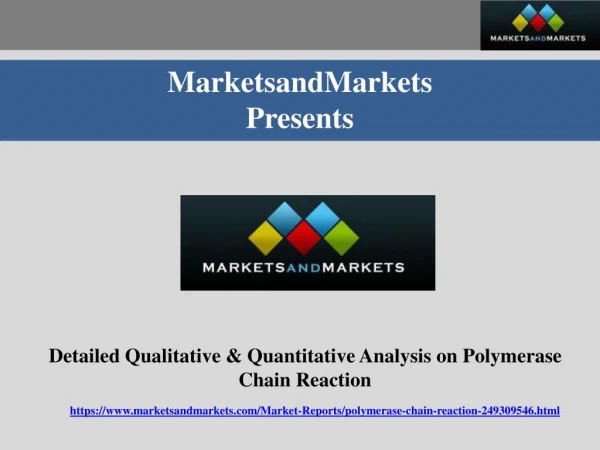Detailed Qualitative & Quantitative Analysis on Polymerase Chain Reaction
PCR is a well-adopted molecular diagnostics technique, and has a wide range of applications ranging from diagnosis of infectious disease, cancer, personalized medicine, and identification of target therapies for particular disease condition. This report provides qualitative assessment of the PCR technology in terms of pricing, replacement trends, competitors’ portfolio analysis, and selection criteria for adoption of PCR instruments from an end-user perspective. The overall market for PCR technology is expected to grow rapidly as the expansion of its application areas and increased accuracy and precision. Furthermore, specific technology segments of the PCR market, such as dPCR (digital PCR) and qPCR (real-time PCR), are witnessing higher market growth owing to their benefits such as real-time process monitoring, low reagent consumption, automation of workflow, and greater reproducibility and precision. The real-time PCR segment commanded the largest share of the global PCR market in 2014, due to the several factors including technological advancements, increasing use of qPCR in research and medical diagnostics, growing use of robotics for lab automation, and expansion of installation base. The study analyses various pricing components of PCR systems. Pricing of PCR system can be broken down into several components which include machine cost, training cost, service and software cost, and maintenance cost, among others. On the basis of end user, the PCR instruments market is segmented into four categories, namely, research laboratories/academic institutes/hospitals, and medium-sized laboratories, reference laboratories, and others (clinical research organizations and forensic laboratories). Reference laboratories commanded the largest share of the market owing to factors such as increased test volume for infectious diseases and cancer. The study also provides analytical framework to understand various factors that determine the purchase decision of PCR instruments by end users. These factors include sensitivity, consistent quality of data, high-throughput ability, multiplexing capability, price of instrument, ease of use, services and support, and brand of a system, among others. The purchase decision of PCR instrument is based on these parameters, and their importance differs as per the diagnostics requirements of various end users
★
★
★
★
★
126 views • 11 slides



